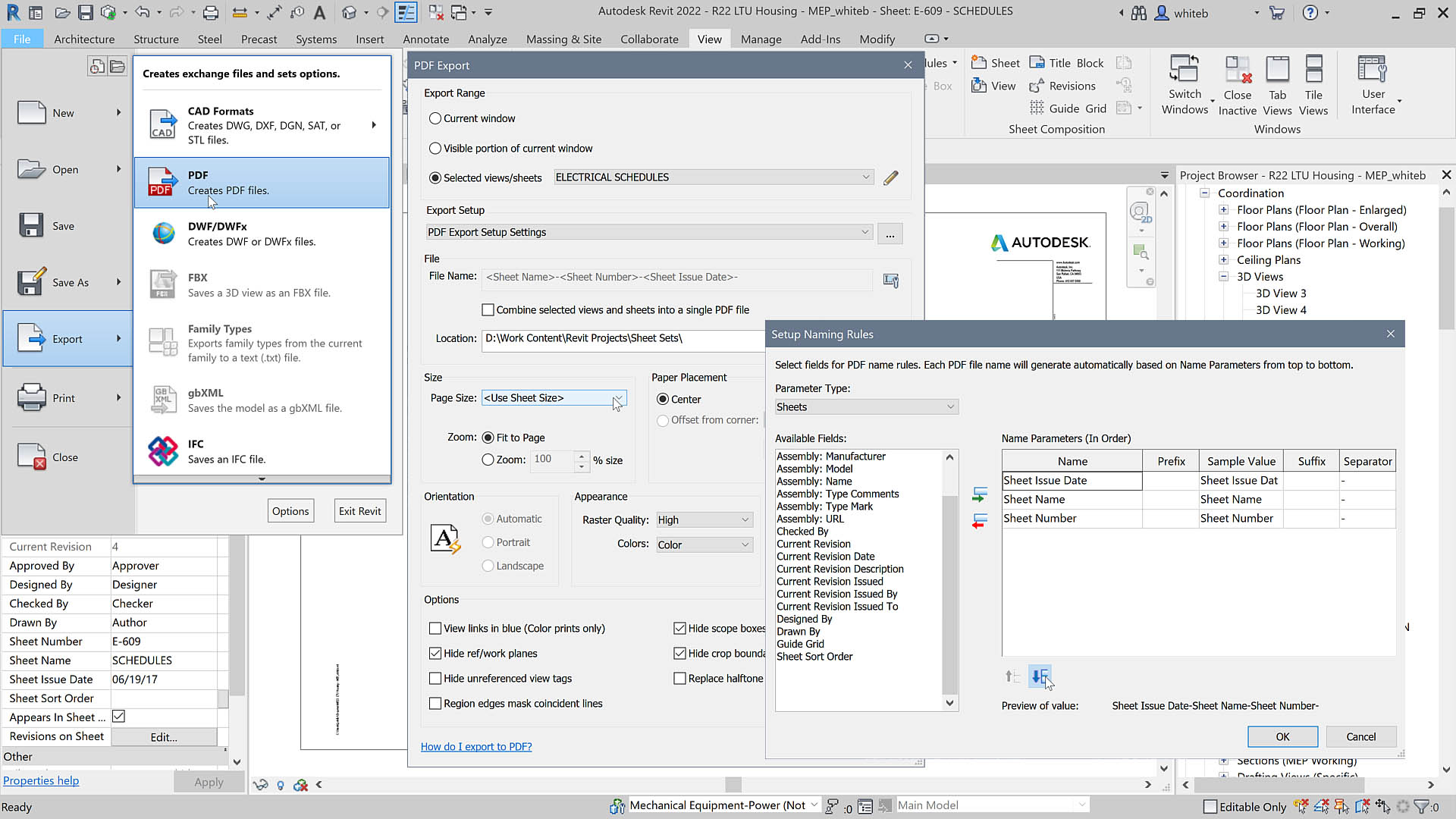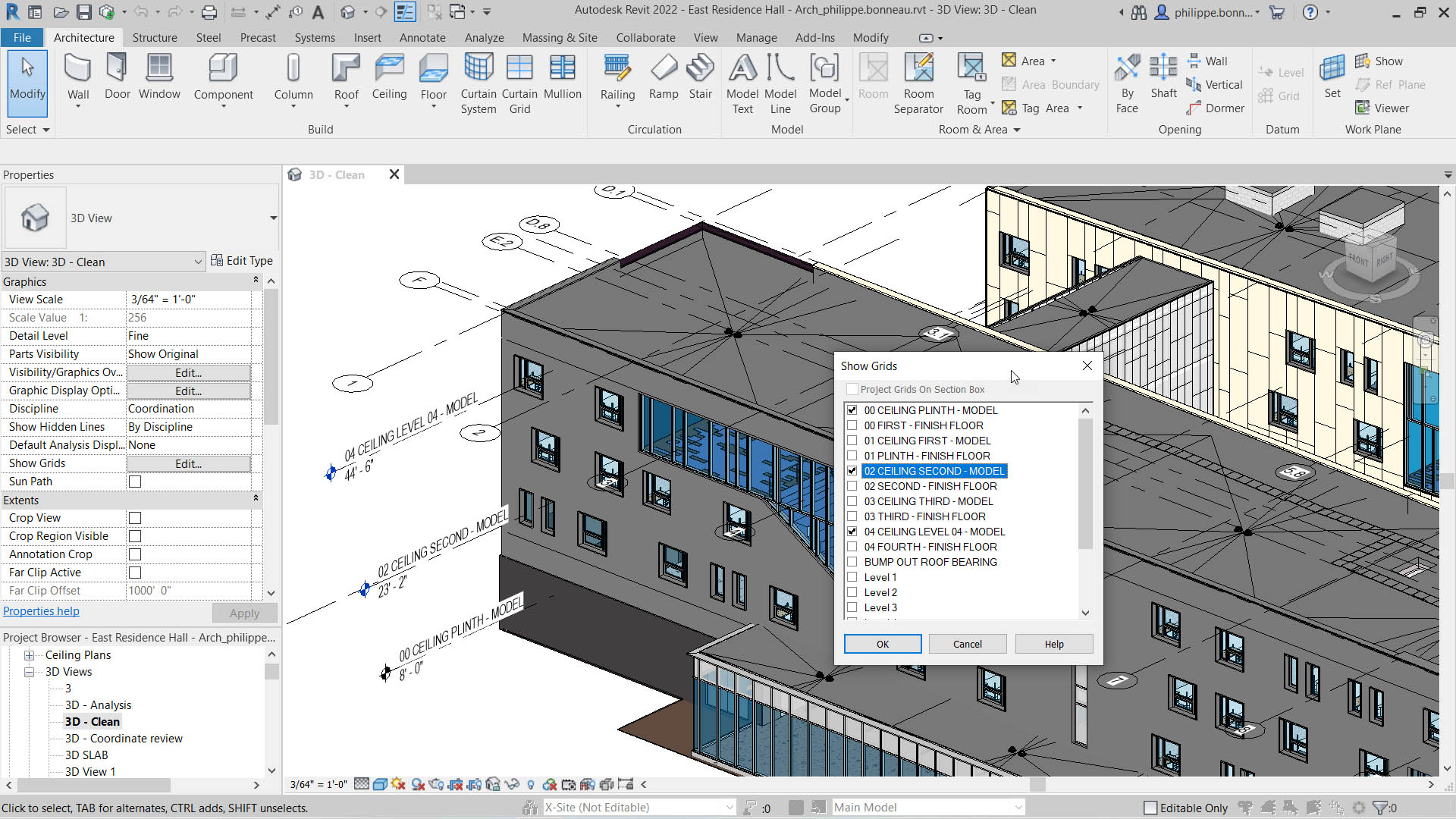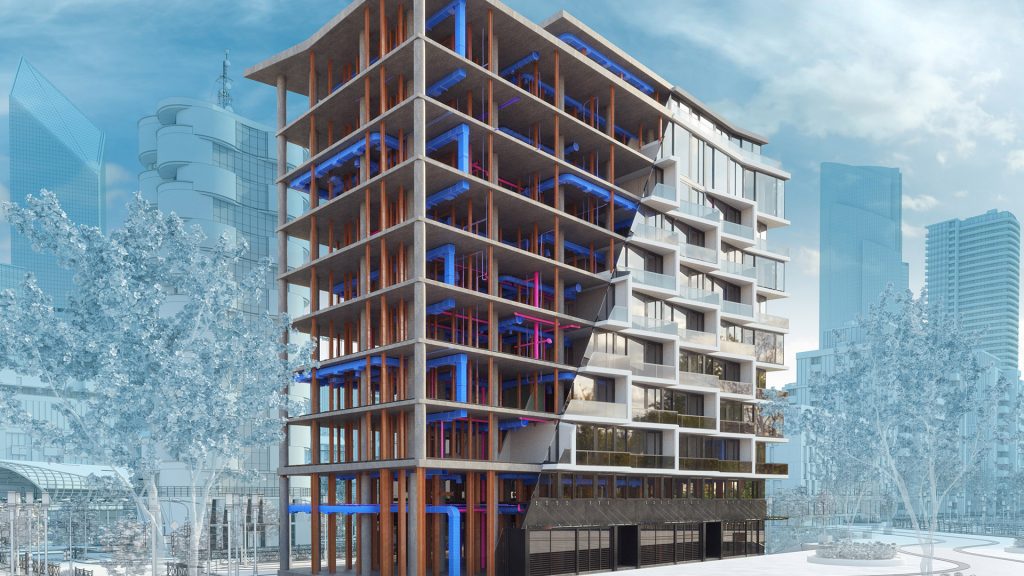From the number of features and enhancements in Revit 2022, it’s clear that Autodesk is attempting to placate customers who complained so publicly at the BIM tool’s lack of development
In July 2020 Autodesk had a some what rude awakening, coming in the form of an open letter from a collection of over 25 architectural practices based in the UK and Australia. The letter raised many issues around Revit, the company’s flagship BIM tool, including years of woeful lack of development and increasing costs. The letter also raised licensing issues, pernicious customer audits over non-compliance, and lack of good interoperability. It really was quite the broadside.
A few months prior to this, Autodesk had announced the end of perpetual licensing and the removal of network licences with the introduction of named user licences, which meant every user had to have their own licence even if they only used the software on occasion. This was the straw that broke the camel’s backyet more licence models, yet more cost. The Open Letter went global and over 200 firms eventually signed it.
Revit is 20 years old. While in its youth, significant upgrades were necessary to flesh out the product’s capabilities, as it entered maturity, it’s fair to say the development velocity tapered off. However, the cost of ownership did anything but. The Open Letter stated that they had seen, on average, increases of 70% in the cost of ownership over five years. Within that period, firms were also running up to five different types of licence models at any one time and, on analysis, out of the 39 products in their suites, they typically used only four applications regularly – AutoCAD, Navisworks, Revit and 3ds Max. None of these products can really be described as having high development velocity.
The fundamental issue will be how deep, beyond the outer layers of Revit’s ‘onion skins’ of functionality, will the development team be willing to go
Autodesk’s executive team reacted with some explanatory blog posts and observations on the issues. They accepted some of the points raised and rejected others but reached out to set up a series of listening engagements with the customers and Autodesk execs and AEC strategy team. A core part of this process was an exchange between the Revit development team and the firms in the Open Letter Group, giving them an opportunity to discuss what features Revit desperately needed for them to get the jobs done.
Following the exchange between the various groups, Autodesk announced that it had expanded access to Revit licences five versions back and pushed back the removal of network licences for another year, before named user became mandatory. While Autodesk did not credit the Open Letter Group for these changes of policy, I doubt they would have come about had the group not raised them so vehemently.
Subsequently, Autodesk also announced it had licensed the ODA’s IFC library, which is an industry standard and should help improve most of Autodesk’s IFC exchange capabilities. While this happened to answer one of the points raised by the group and was championed by the company to show they were listening, Autodesk had been negotiating this before the Open Letter came out.
Post Open Letter, those watching Autodesk closely noticed an increase in the number of jobs advertised for Revit development and much higher visibility of the Revit development team on social media platforms, as well as its own forums. Revit’s future roadmap became an open-source discussion for input and engagement and at Autodesk University, CEO Andrew Anagnost explained how proud he was of the Revit team in reaching out to firms of all sizes, not just listening to the loud mid to large ones, to collect and prioritise feature requests.
With the launch of Revit 2022 this April, we had our first insight into the renewed development focus of the post-open letter period and on the face of it there has been a whole lot of enhancements and additions and it reads as certainly the kind of eclectic release that would indicate that it had indeed been driven from broad customer input.
Revit 2022
The new release of Revit contains anywhere between 35 to 60 enhancements, depending on how you want to count them – which is probably more than was delivered in the last three releases combined. Customer reactions have varied from ‘oh my God it feels like Christmas’ to ‘about bloody time’, to ‘this is like rearranging deck chairs on the Titanic’. It really depends on if the updates have positively impacted features you use regularly, or perhaps didn’t already have workarounds for.
There is definitely something in there for every user but then there were those who were always hoping for a deeper more meaningful rewrite. It’s going to take a number of releases to convince customers that Autodesk is serious about maintaining the development velocity they have been expecting. I think it’s only fair as well to consider that while Autodesk had a roadmap for Revit development, it has devoted additional time and energy to engage/listen to users over last summer and autumn and then accommodate additional features at relatively short notice, in development-cycle terms.

At the moment in the industry there is a lot of concentration on the conceptual design phase. Autodesk has picked up on this and now Revit 2022 supports the linking of McNeel Rhinoceros 3DM files. There is also a new round-trip capability between FormIT Pro and Revit .
Autodesk’s manufacturing tool, Inventor has also been upgraded to export assemblies as RVT files, better linking architectural design with digital fabrication, another long-term aim for the AEC division.
A built-in PDF exporter for 2D views and sheets is now included, it even does batch export. Prior to Autodesk buying Revit, it could export PDFs but this was removed as a feature. I seem to remember that this was about Autodesk promotion of DWF as an alternative. 20 years later and it’s reappeared!


Generative Design tools get a raft of enhancements, such as new study types to enable the distribution of objects in space such as grid object placement or random object placement. There are new dynamo tools.
Last year Revit got slanted walls; now it can model tapered walls. Non-core layers can be switched off, making walls easier to document. There have been number of visual additions, such as support for better quality RPC (Rich Photorealistic Content) when rendering in realistic views. It’s also now possible to control the visibility of Grids as 3D planes in 3D views.
Other notable enhancements:
- Support for multileader tags
- IFC4 architectural and structural export
- Custom revision numbering for PAS- 1192/ ISO-19650
- Enhanced tag rotation
- Phase parameters in view filters
- Revit schedules support CSV Export
- Curtain wall mullions can be tagged
- Improved colour palette as the default colour scheme
- Enhanced Dynamo nodes
- Support for spot slopes on ramps
- People content and People Flow Toolkit included for egress analysis
- 2D performance of Rebar improved in zoom and pan
- MEP supports ASHRAE 90.1 Code Compliance
- API enhancements
- There are also lots of subtle changes to the UI and dialogues across the application
This isn’t what I’d call a meat and two veg update, it’s a tapas tsunami with lots of mainly small enhancements that add up to something potentially filling.

It’s interesting that after 20 years Autodesk decides to add a PDF export tool. It’s been so long that customers have developed workarounds for this glaring omission. While customers may be asking for this feature from Autodesk, one has to wonder if Autodesk’s time could have been better spent creating features which no other developer could do for Revit?
For a full list of individual Revit 2022 features Niall Kelly’s 8020 BIM has a comprehensive list.
Conclusion
It’s clear from Autodesk’s reaction that it knows it dropped the ball on Revit development, introduced too many dramatic licensing changes and didn’t provide value for money in the eyes of its larger customers, who are seeing their historic discounts shrink
Anagnost admitted to Wall Street analysts that they had put many customers in ‘licensing hell’, managing multiple licence types. In this context, the expansion of access to five versions back and renewed emphasis on Revit software development are welcome but customers are also looking for price stability and consistent licensing policies. It also seems moving to named user licensing is no guarantee that you won’t get audited, or transgress and become non-compliant.
The fundamental issue will be how deep, beyond the outer layers of Revit’s ‘onion skins’ of functionality, will the development team be willing to go. The deeper the functions to the core, the greater the chance of causing serious regressions and bugs in any reworking. So, it’s unlikely that a big rewrite is on the cards, but portion sizes of features in new releases are more likely to resemble Revit 2022 than Revit 2018.
It’s also handy to have so many customers who want small enhancements. While Autodesk made a big effort to engage with its smaller customers, it was a bit odd, considering it was the serious, mature Revit customers who were rebelling and asking for more fundamental changes. It’s almost as if Autodesk chose to drown out those who were complaining, with those who were not complaining, biasing development towards those who aligned with the existing product roadmap and who would have lower expectations of depth of new functionality.
It’s not widely known, but the Open Letter Group were not the only ones complaining. A few weeks after the Open Letter went public, a number of signature architects approached Autodesk privately, backing-up the complaints on the lack of Revit development and to express aspirations for a next-generation design system. From what I can tell, they too were put in the same engagement loop to collate feature requests, with regard to feeding into the existing roadmap.
The fundamental question of ‘what is the ‘‘ future of Revit?’ has not gone away. Autodesk has ruled out a next generation and the company is ‘betting the farm’ on the cloud
As both groups were asking for more comprehensive and fundamental redevelopment, I sense there was disappointment at the lack of commitment from Autodesk to stray too far away from the existing roadmap, leaving a number pondering if they should migrate to something else and stop investing in what was clearly a legacy system. I don’t think the contents of Revit 2022 have changed that mindset.
The fundamental question of ‘what is the future of Revit?’, has not gone away. Autodesk has ruled out a next generation and the company is ‘betting the farm’ on the cloud. We have heard about trials which involve streaming Autodesk’s desktop applications, such as Revit, direct to desktop and mobile machines, which requires running Revit as a non-optimised application in a virtual machine on a server. This is one possible future for nearly all Autodesk’s desktop applications and solves a temporary problem, to get legacy applications quickly on the cloud, on demand, ideally co-located where customers design data is stored.
Over the longer term, these flagship desktop applications could be broken down and rewritten using Forge to enable thin client variants to be served up anywhere on the planet but this is so far from what’s available now, it could be many years away.






